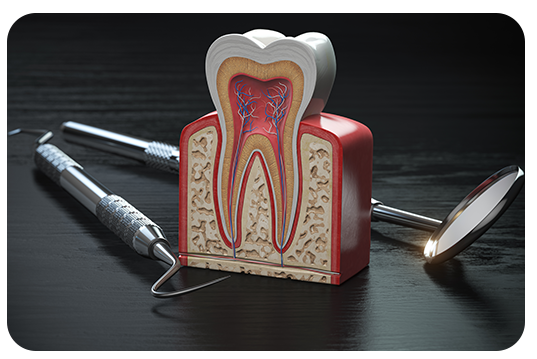Reatorative Dentistry
Reatorative Dentistry
What is Restorative Dentistry?
Restorative Dentistry: Restoring Your Smile and Function


Common Procedures in Restorative Dentistry
Common Procedures in Restorative Dentistry
Benefits of Restorative Dentistry
Benefits of Restorative Dentistry


Dental Implants: The Gold Standard for Tooth Replacement
Dental Implants: The Gold Standard for Tooth Replacement
Crowns and Bridges: Restoring Strength and Appearance
Crowns and Bridges: Restoring Strength and Appearance


Full and Partial Dentures: A Comfortable Solution for Missing Teeth
Full and Partial Dentures: A Comfortable Solution for Missing Teeth
Root Canal Therapy: Saving Your Natural Teeth
Root Canal Therapy: Saving Your Natural Teeth


Preventing Tooth Loss with Restorative Dentistry
Preventing Tooth Loss with Restorative Dentistry
Choosing the Right Restorative Treatment for You
Choosing the Right Restorative Treatment for You

Frequently Asked Questions
Porcelain Laminate or Composite Laminate?
Why Are Color, Shape, and Symmetry Harmony Important in Dental Aesthetics? In smile design, achieving harmony in color, shape, and symmetry is key to creating a natural, balanced appearance. Discrepancies can make even healthy teeth look unattractive. Factors considered: • Matching the veneers or crowns to the natural tooth color and shape • Ensuring proportionate tooth sizes relative to facial features • Aligning teeth for overall symmetry This careful planning ensures the smile enhances the patient’s overall facial aesthetics.
A night guard is a custom-made device worn over teeth at night to: • Prevent tooth damage from grinding or clenching • Alleviate jaw tension and headaches related to bruxism Individuals with teeth grinding, jaw pain, or those who have had restorative dental work are often advised to use a night guard.
What Are the Early Signs of Gum Disease?
Laminate veneers may not be suitable for individuals with: • Severe tooth misalignment or bite issues • Insufficient enamel • Habitual teeth grinding (unless managed with a night guard) • Active gum disease A thorough dental examination is necessary to determine veneer suitability.
